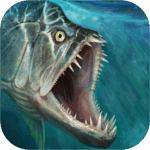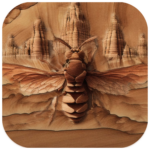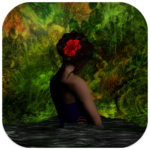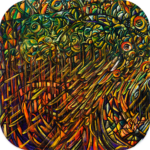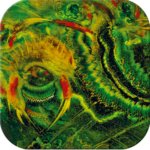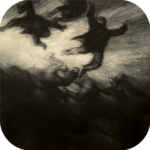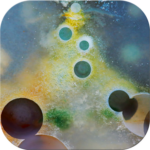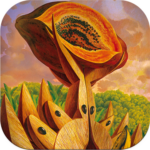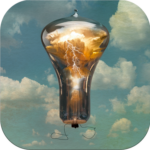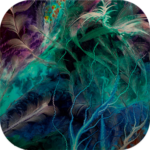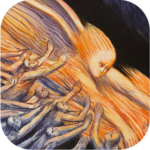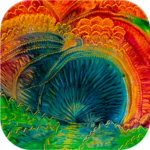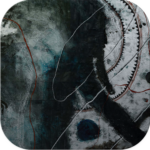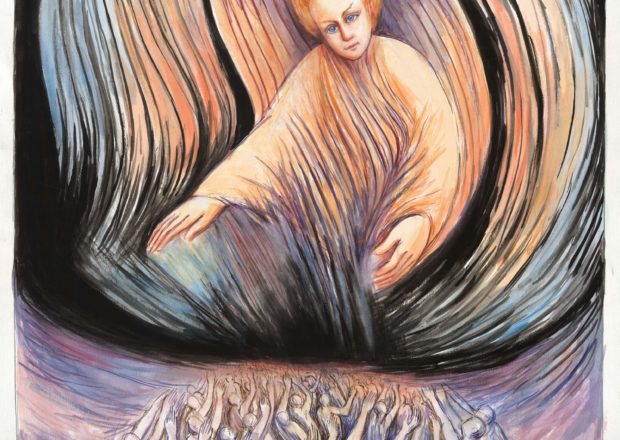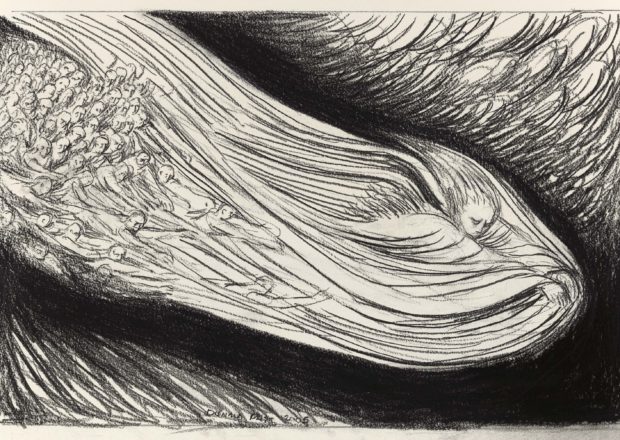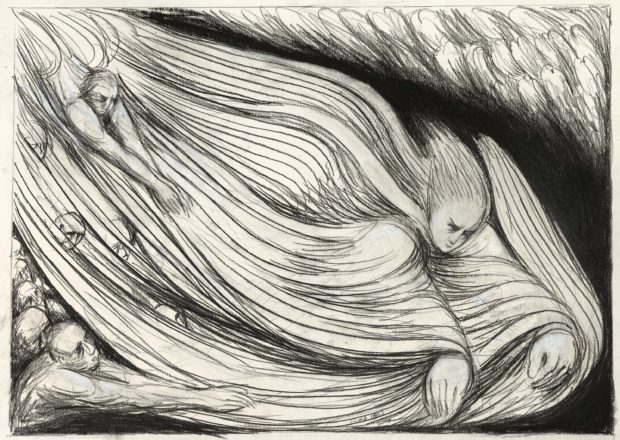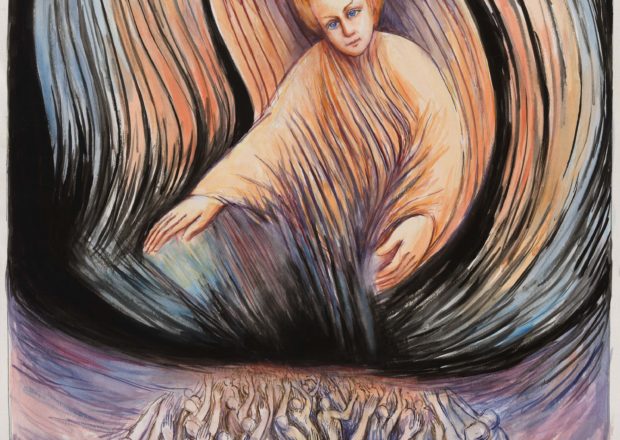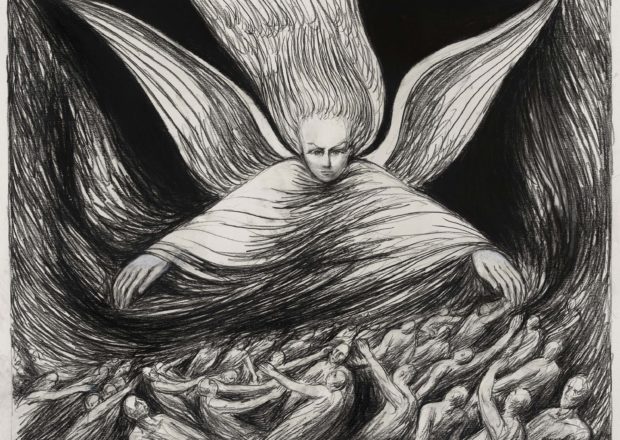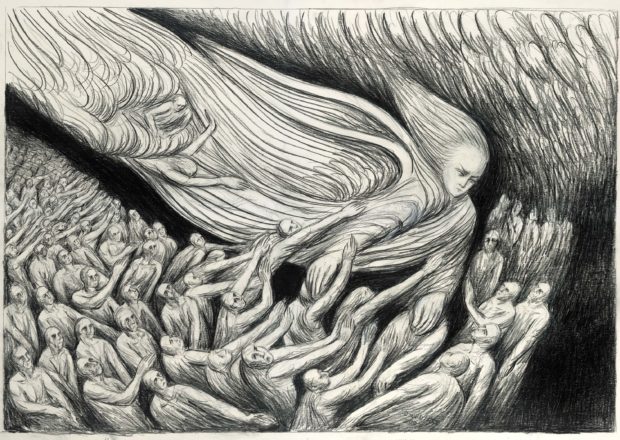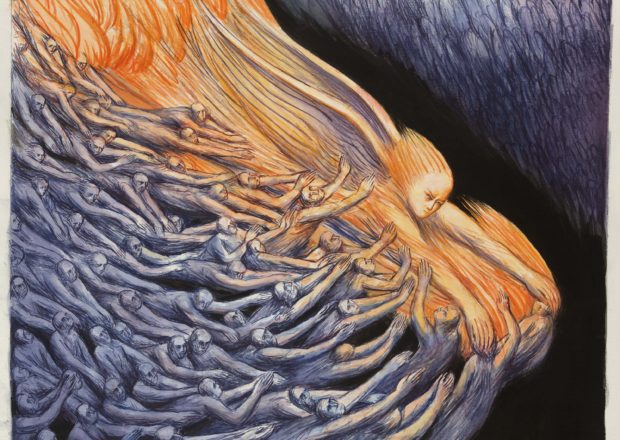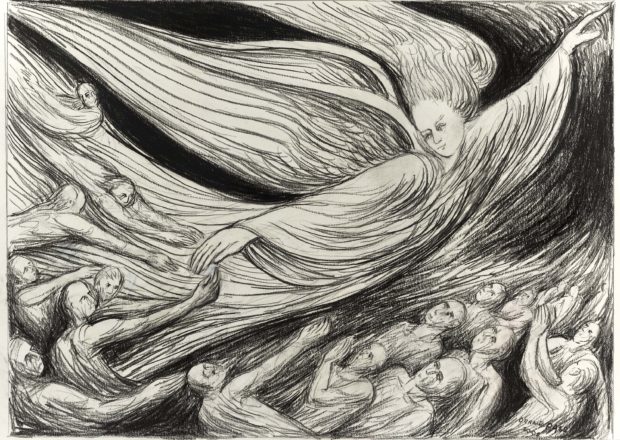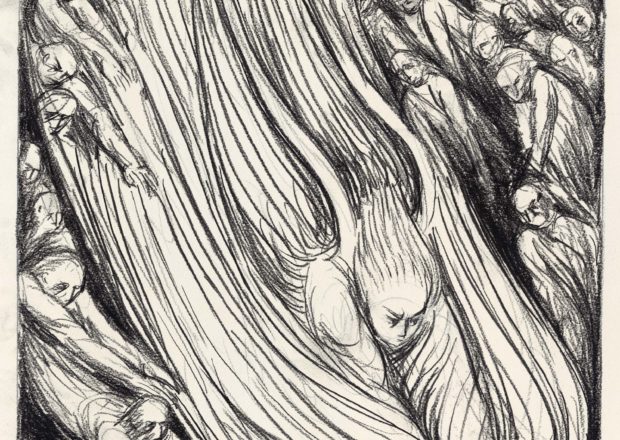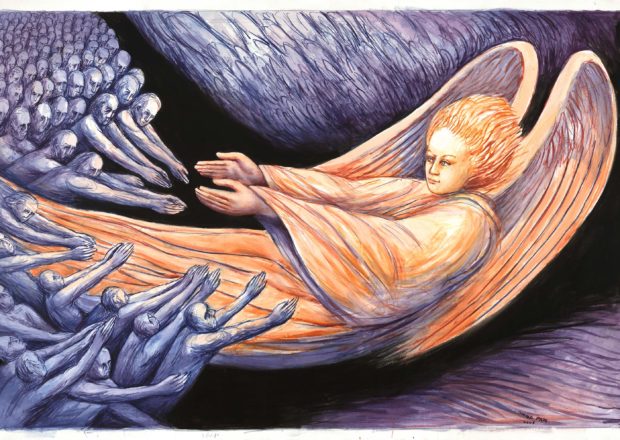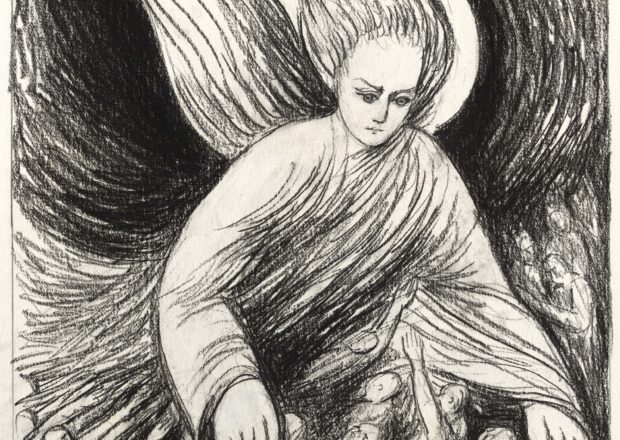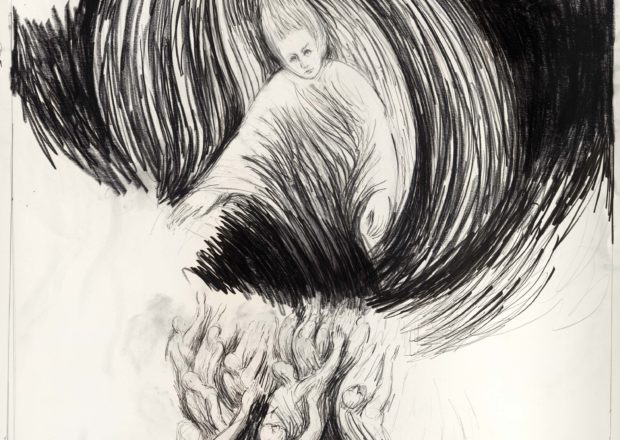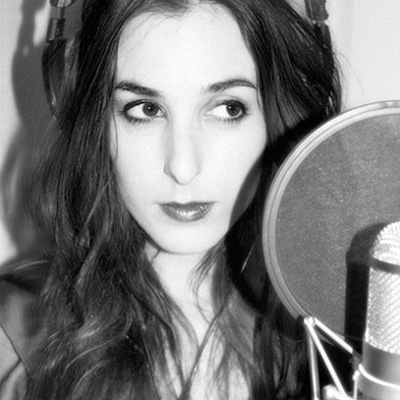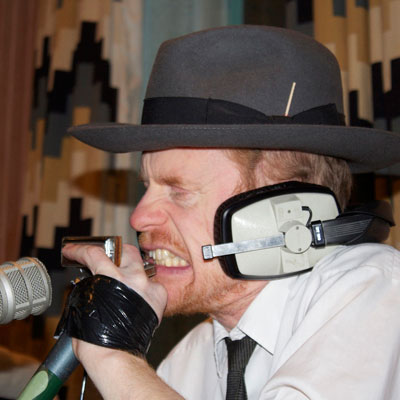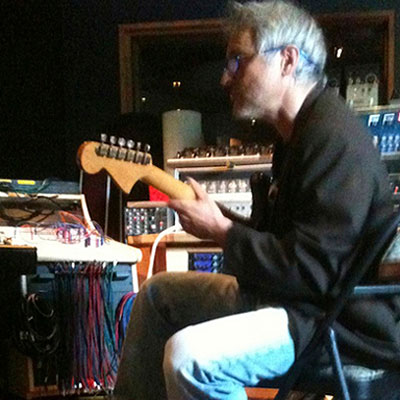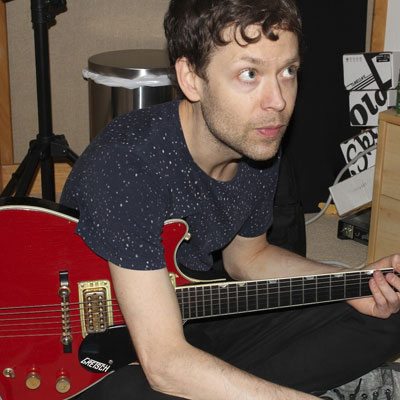The Art
The Animations
The Music
About the Art, Animations and Music
Q: The late Visionary painter, Donald Pass, provided the artwork for The Hope We Seek.
RS: I first became familiar with Donald’s work about eight years ago. I heard about his vision in the churchyard, and I found it easy to believe that the scenes depicted in his paintings came from a real experience. They are that vivid. That impactful.
His images of the resurrection of souls were close, in substance and feeling, with the mental pictures I had formed of Hope and the crowds of souls struggling to deliver themselves to her. He seemed like the ideal artist for the project. I had some trepidations, however. I wasn’t sure if he would embrace my fiction as something that could exist alongside his vision. And there was the question of personal chemistry.
Meeting him, crossing the bridge we had to cross, being understood and accepted by him—that ended up meaning a lot more to me than the work we did to produce the Hope paintings.
He left us in 2010. I wish our friendship could have lasted longer. I’m thankful that he was able to be a part of The Hope We Seek.
Q: New Zealand-based animator Tomas Cottle has created striking animations from Pass’ artwork.
RS: Bringing Hope to life in the text was a labor of years. It was a shock to see her gesturing to the miners, opening her wings and diving into the depths. Tom’s work, for me, is more than masterful. It’s a kind of magic.
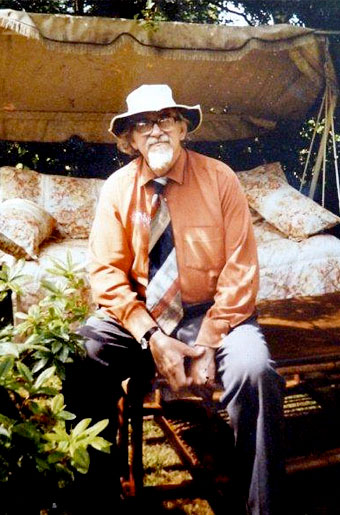
About the Art, Animations and Music
Q: The late Visionary painter, Donald Pass, provided the artwork for The Hope We Seek.
RS: I first became familiar with Donald’s work about eight years ago. I heard about his vision in the churchyard, and I found it easy to believe that the scenes depicted in his paintings came from a real experience. They are that vivid. That impactful.
His images of the resurrection of souls were close, in substance and feeling, with the mental pictures I had formed of Hope and the crowds of souls struggling to deliver themselves to her. He seemed like the ideal artist for the project. I had some trepidations, however. I wasn’t sure if he would embrace my fiction as something that could exist alongside his vision. And there was the question of personal chemistry.
Meeting him, crossing the bridge we had to cross, being understood and accepted by him—that ended up meaning a lot more to me than the work we did to produce the Hope paintings.
He left us in 2010. I wish our friendship could have lasted longer. I’m thankful that he was able to be a part of The Hope We Seek.
Q: New Zealand-based animator Tomas Cottle has created striking animations from Pass’ artwork.
RS: Bringing Hope to life in the text was a labor of years. It was a shock to see her gesturing to the miners, opening her wings and diving into the depths. Tom’s work, for me, is more than masterful. It’s a kind of magic.
“We needed someone who sounded like she came from a different realm. Marissa’s a wild creature. She lives half in this world and half in another.”
Q: The music, Songs from the Big Wheel, is performed by a female singer and musicians during the course of the story.
RS: The camp madam, Salt Lick, writes these songs for the purpose of entertaining and encouraging the miners. She’s creating a connection between what goes on in the alcoves and what’s going on in the mine.
The songs also reflect the tenor of the camp—their progress in the diggings and their emotional state, as seen through Salt Lick’s eyes. The miners live with these songs in their ears, so phrases from them emerge in their dialogue. The songs are a part of the world of the mine. And they were with me during the writing of the novel. As with my other projects, the music and lyrics evolved with the story.
Q: Singer/songwriter Marissa Nadler breathes life into Hope with her vocals.
RS: It was a difficult casting job. We listened to a lot of vocalists, trying to find someone who could project a special kind of power and command, and the unachievability that is Hope. We needed someone who sounded like she came from a different realm.
Marissa’s a wild creature. She lives half in this world and half in another. She managed to embody both the allure and the remoteness of Hope. She gave an authentic voice to Hope’s promises and threats. And she showed up at the studio in costume. She was Hope, top to bottom.
Q: Marissa is joined by you on acoustic guitar and mandola, along with Marc Ribot, Robert Powell, Andy LeMaster, Joe Gore and Son of Dave.
RS: This was our first time working with Son of Dave. I’ve been a fan of his for quite a while. It was a thrill to have him perform on the Big Wheel dais.
We have a fair amount of history with Marc, Robert, Andy and Joe. They’re great collaborators.
In my early experiments, I cast a broad net. I found musicians from a number of different musical genres—people who I had a special attraction to, based on my fondness for their music. I discovered that the most fruitful relationships were with two kinds of people. First, the eccentrics. I’m referring to musicians whose lexicon doesn’t belong to any particular idiom. Every artist has influences, but a musician like Robert Powell or Jim Campilongo is authentically different. In both cases, the voice is so distinctive that you can hear a five-second phrase and know who it is.
I think that quality has its counterpart in literature. You can read a few sentences of Arthur Machen or Leonid Andreyev and identify the author. Or art. You can look at a few square inches of Max Ernst or Van Gogh or Eugene Von Bruenchenhein and identify the artist. The second kind of relationship I’ve gravitated toward is with someone like Marc Ribot, who is a virtuoso—a man of a thousand voices. He has such mastery of so many musical lexicons, and he is so free with his imagination, that he can do things that are highly original without being identifiable.
Art, Animation and Music Credits
Original artwork by Donald Pass. Animations created by Tomas Cottle.
Animations produced and storyboarded by Rich Shapero, Jan Lindsay-Smith and Josh Turner
Songs from the Big Wheel
The Music of The Hope We Seek
Vocals: Marissa Nadler
Acoustic Guitar, Mandola: Rich Shapero
Harmonica, Percussion: Son of Dave
Electric Guitar: Marc Ribot
Pedal Steel: Rob Powell
Electric Guitar: Joe Gore
Electric Guitar: Andy LeMaster
Words, music, and arrangements: Rich Shapero
Produced by: Rich Shapero, Josh Turner and Jan Lindsay-Smith
Engineered by: Josh Turner
Mixed by: Chuck Ainlay and Peter Katis
Mastered by: Gavin Lurssen
